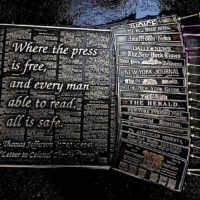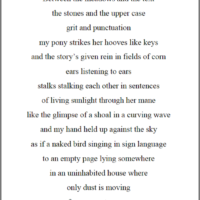Economists Emmanuel Saez and Gabriel Zucman talk about how the rich dodge taxes and how to make them pay. And authors Suketu Mehta and zary Shteyngart discuss how American culture is constantly being remade by immigrants.
GC CUNY Keeps the Conversation Going:
GC CUNY Keeps the Conversation Going:
Roxane Gay and Katia D. Ulysse
GC Presents: Roxane Gay, a powerful literary voice and one of today’s most-watched cultural critics, joins in a reading and conversation with acclaimed fiction writer Katia D. Ulysse. (Courtesy of GC CUNY’s Public Programs archive.)
GC CUNY Keeps the Conversation Going:
Milanovic, Piketty, Stiglitz, and Krugman
While events are postponed at The Graduate Center of the City University of New York in the heart of Manhattan, videos of recent public programs will be featured from its archive for your enjoyment. The videos provide illuminating discussions in two main categories: insights into current events and conversations with leading writers and artists. (Courtesy of GC CUNY’s Public Programs archive.)
Twitter Fingers Has It ‘Totally Under Control’—Oh Yeah.
As of two weeks ago, about a million people saw this. Some three hundred million more need to see it. Now he’s trying to kill ads that use his own words against him.
Virus Cooking: Some People Go Stir Crazy
Guillaume Robert goes salad crazy.
Trump to the Rest of Us: Drop Dead
President Twitter Fingers had the Center for Disease Control send a mailer to promote himself of course. It showed up in my mailbox yesterday touting his “coronavirus guidelines for America.” But we know what he really means. The caricature is by Donkey Hotey.
Modern Life
This 13-second video has been making the rounds. I nearly fell down laughing.
Coping with the Shitstorm #1
A friend writes: “At the clinic some of the people asked after me, and the doc said, ‘Well his routine hasn’t altered one minute. Or one millimeter.’ All of them in stitches—and of course it is true. I have been in self-isolation since age 15— so lots of fun seeing the rest deal with it. […]
Out of Stock
President Twitter Fingers and his cabinet officials. Questions have come in asking if those beak masks are real or a made-up joke. The answer is they are real. The headline and caption are the joke of course.
‘Where the Press Is Free . . .
. . . and every man able to read, all is safe.’ — Thomas Jefferson
‘Would that it were so.’ — Straight Up | Staff of Thousands
What . ? . No Patti Smith?
Just kidding . . .
King’s Dream Deferred
Whatever the blowhard president of Trumpistan says in his official proclamation to honor Martin Luther King Jr., rest assured it is phony to the last pixel and not worth the time to read it. (To save you the trouble, here’s a sample: “My Administration works each day to ensure that all Americans have every opportunity to realize a better life for themselves and their families regardless of race, class, gender, or any other barriers that have arbitrarily stood in their way.”) And for the record let’s not forget that when King made his historic “I have a dream” speech from the steps of the Lincoln Memorial in 1963, it was hardly noticed by the nation’s most widely circulated newspapers. Have a look at King delivering that speech and be reminded of what they missed.
Kurt Wold: ‘Stradoferous’
“I dreamt I could play the bicycle. This performance artwork plays with a number of themes, not the least of which is the continual contemporary pressure to present oneself as larger-than-life, in the hope that one might be noticed in a distracted culture. Of course the work also revels in those distractions.” — Kurt Wold
If This Was an Actual Real-Time Photo . . .
. . . which it was . . . You have to wonder what floor can I get out? [Insert punchline, pls.]
A Poem and Its Genesis: Malcolm Ritchie’s ‘Writing It’
… and my hand held up against the sky / as if a naked bird singing in sign language / to an empty page lying somewhere / in an uninhabited house where / only dust is moving / from room to room … — from “Writing It”
And From the Outlaw End of the Writing Spectrum
“At age 84, Plymell continues to write, publish and perform—“doing nuttin”, as he says—from his home in Cherry Valley, New York. His activities keep Plymell in steady correspondence with a crowd of like-minded hellions, including rockabilly’s Bloodshot Bill, Sonic Youth founders Kim Gordon and Thurston Moore, bassist Mike Watt, filmmaker Mark Hanlon, guitarist Bill Nace, photographer Philip Scalia and musicologist Byron Coley. Plymell and his wife, Pam, first happened upon Cherry Valley in late 1969 in coming to visit Allen Ginsberg and Peter Orlovsky at their East Hill farm. Moving there for good in early 1970, the Plymells have set into adding to their immense creative legacy.” – Benito Vila
A Blogpost for the Ages
This was it, Jan. 12, 2017 . . . It began like this: ‘On the day Twitter Fingers is sworn in as the preening el presidente of a tin-pot United States of Trumpistan, enabling him to run the country like a division of his family-held company . . . ‘ and continued with a 17-minute recording of Heathcote Williams reading his poem “The United States of Porn.” That reading alone puts the blogpost in a class of its own.















![Heathcote Williams [Photo: JH, 2013]](https://www.artsjournal.com/herman/wp/wp-content/uploads/2017/07/heathcote-williams-photo-copy-200x200.png)